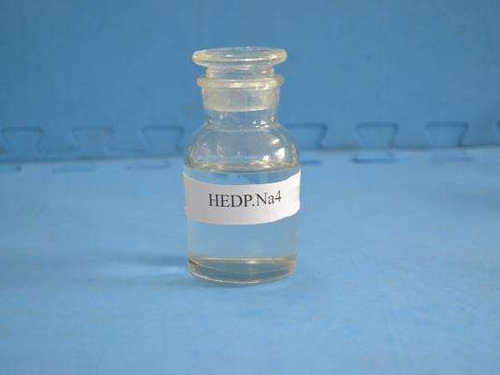Synthesis and Applications of Ethylene Diamine Tetra Methylene Phosphonic Acid in Various Industries
Ethylene Diamine Tetra Methylene Phosphonic Acid An Overview
Ethylene diamine tetra methylene phosphonic acid (EDTMPA) is a highly functional chelating agent composed of a phosphonic acid group integrated into an ethylene diamine framework. This unique chemical structure bestows EDTMPA with remarkable properties, making it invaluable in various industrial applications, particularly in water treatment, agriculture, and pharmaceuticals.
Chemical Structure and Properties
EDTMPA possesses four methylene phosphonic acid groups attached to a central ethylene diamine core. This configuration allows EDTMPA to effectively chelate metal ions, forming stable complexes that prevent undesirable reactions such as precipitation or oxidation. It features high water solubility and thermal stability, which are critical attributes for its performance in aqueous environments.
The phosphonic acid groups within EDTMPA can act as strong acids, dissociating into negatively charged phosphonate ions in solution. This characteristic enables EDTMPA to interact with positively charged metal ions, such as calcium, magnesium, iron, and heavy metals. The resulting complexes are highly stable, even under varying pH and temperature conditions, making EDTMPA a reliable choice for applications requiring prolonged efficacy.
Applications in Water Treatment
One of the primary applications of EDTMPA is in water treatment processes. It is commonly used to inhibit scale formation in boilers and cooling systems. The chelation of metal ions effectively reduces their concentration in water, preventing scale accumulation on equipment. This is crucial for maintaining operational efficiency and prolonging the lifespan of machinery.
Moreover, EDTMPA acts as a corrosion inhibitor, protecting metal surfaces in contact with water. By forming a protective layer on these surfaces, it minimizes corrosion rates, which can otherwise lead to significant maintenance costs and operational downtime. The use of EDTMPA in water treatment not only enhances equipment performance but also promotes environmental sustainability by reducing the need for harsh chemical alternatives.
ethylene diamine tetra methylene phosphonic acid

Role in Agriculture
In agriculture, EDTMPA is utilized as a chelating agent for micronutrients, enhancing nutrient availability for plants. Many essential elements like iron and zinc can become insoluble in soil, making them unavailable for plant uptake. EDTMPA helps to solubilize these micronutrients, ensuring that crops receive the necessary nutrition for optimal growth.
Furthermore, the application of EDTMPA can improve the efficiency of fertilizers by preventing nutrient fixation in soil. This amplification of nutrient bioavailability can lead to higher crop yields and improved agricultural productivity, aligning with the increasing demand for sustainable farming practices.
Implications in Pharmaceuticals
The pharmaceutical industry has also recognized the potential of EDTMPA, primarily as a chelating agent in drug formulations. It has demonstrated efficacy in the treatment of heavy metal poisoning, forming non-toxic complexes with harmful metals that facilitate their excretion from the body.
Additionally, EDTMPA aids in stabilizing drug formulations by preventing metal ion-induced degradation. This stabilization is particularly important for maintaining the efficacy and shelf-life of pharmaceutical products, ensuring that patients receive safe and effective treatments.
Conclusion
Ethylene diamine tetra methylene phosphonic acid (EDTMPA) is a versatile compound with a wide range of applications across various industries. Its ability to chelate metal ions, inhibit scale formation, enhance nutrient availability in agriculture, and stabilize pharmaceutical formulations underscores its significance in modern chemical applications. As the demand for sustainable and efficient solutions continues to rise, EDTMPA is poised to play an increasingly vital role in addressing global challenges related to water treatment, agriculture, and health. The ongoing research and development in this field may uncover new uses and formulations, reinforcing EDTMPA’s standing as an essential agent in the quest for enhanced performance and environmental sustainability.
-
Understanding Polycarboxylic Acids: Properties, Applications, and Future PotentialNewsJul.28,2025
-
Scale Inhibitor Explained: How to Protect Your System from Limescale and Hard Water DamageNewsJul.28,2025
-
Scale and Corrosion Inhibitors: Essential Chemicals for Industrial Water System ProtectionNewsJul.28,2025
-
Polyaspartic Acid: A Biodegradable Polymer for Sustainable ChemistryNewsJul.28,2025
-
Isothiazolinones: A Versatile Antimicrobial Class with Industrial Power and Regulatory ChallengesNewsJul.28,2025
-
A Deep Dive into 2-Phosphonobutane-1,2,4-Tricarboxylic Acid (PBTC)NewsJul.28,2025





